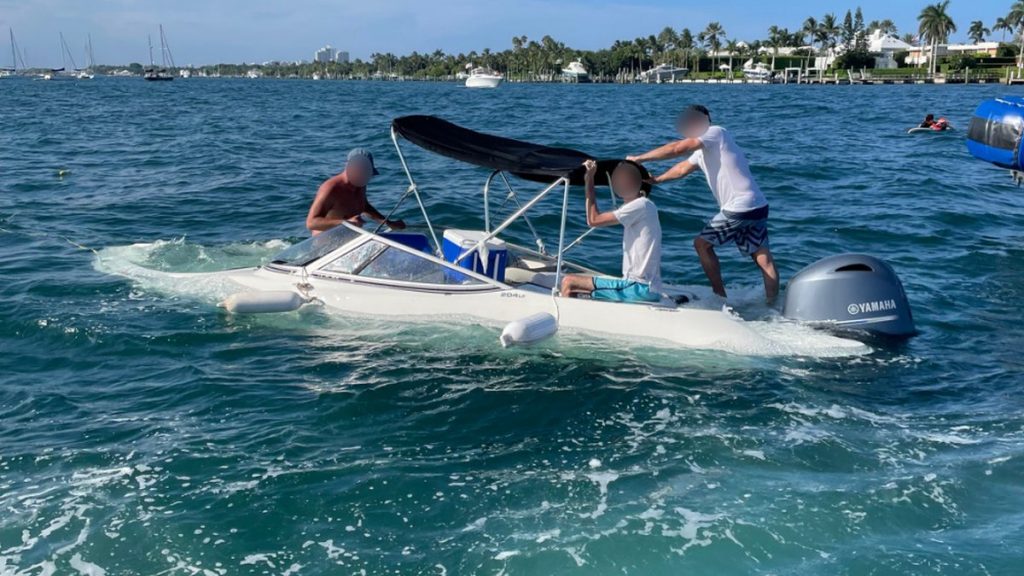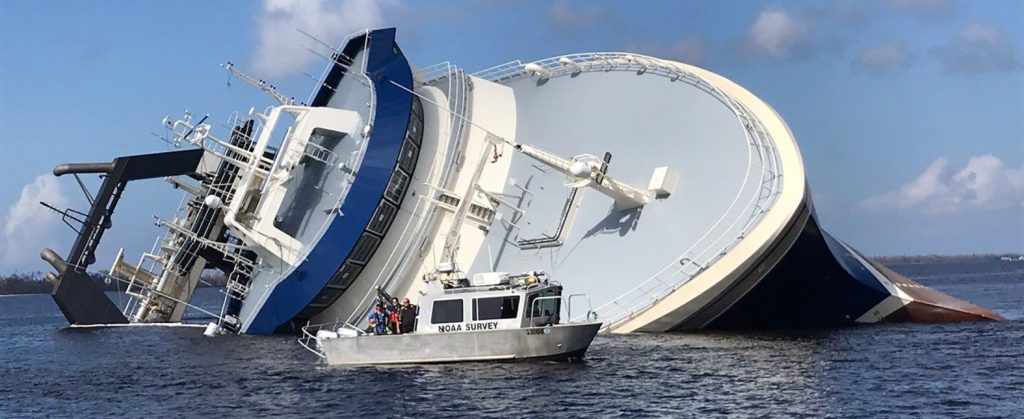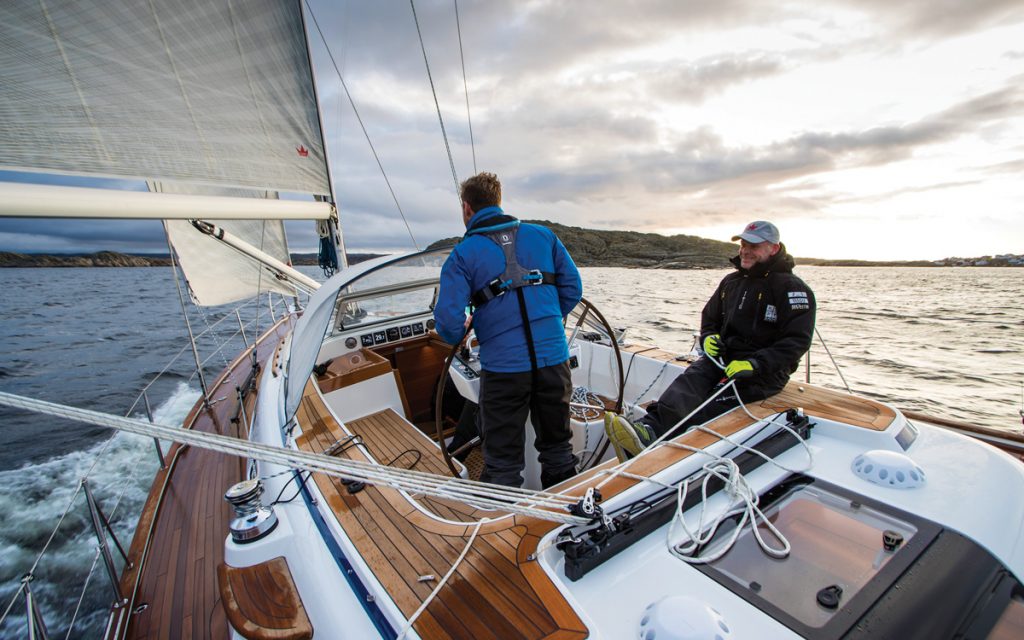Capsizing Dangers: Essential Tips for Boat Safety
Capsizing is a critical maritime concern involving a boat or ship rolling onto its side or turning upside down due to various factors. This potentially dangerous situation can occur from natural causes, such as wave action, or human factors, including instability or excessive speed.
Capsizing affects various types of vessels, from small sailboats to large cargo ships, and can have dire consequences for those onboard.

Understanding the causes, effects, and recovery methods for capsizing is vital for maritime safety. Different vessel types have unique stability characteristics, which influence their susceptibility to capsizing. Some common reasons for this maritime incident include broaching, knockdowns, and loss of stability.
Being knowledgeable about capsizing can help individuals and organizations take proper preventive measures and increase survival chances during such events.
Key Takeaways
- Capsizing involves a boat or ship rolling onto its side or turning upside down due to various factors
- Different vessel types have unique stability characteristics that influence their susceptibility to capsizing
- Understanding the causes, effects, and recovery methods for capsizing is crucial for maritime safety

Capsizing Defined
Capsizing refers to the accidental overturning of a boat or ship while on water. This can occur as a result of various factors such as strong waves, instability, or improper loading. The Cambridge Dictionary defines capsizing as the action of causing a boat or ship to turn upside down, either intentionally or by accident.
There are several techniques and safety measures that can be taken to prevent capsizing. One such method is ensuring proper weight distribution in the vessel. This helps in maintaining stability and equilibrium, thus reducing the risk of capsizing. Keeping the boat's center of gravity low also plays a vital role in preventing it from turning over.
It is crucial to understand the weather and water conditions before venturing out into open waters. Adequate knowledge of these factors can help in making informed decisions while navigating and avoiding potential hazards. The Cambridge University Press, a reputable source for language-related information, offers a detailed explanation and context for the term capsizing.
Should capsizing occur, it is essential to remain calm and adhere to safety protocols such as wearing life jackets, which can prove to be lifesaving in such situations. In some instances, it may also be possible to re-enter the overturned boat or wait for assistance if there is no immediate danger.
In summary, capsizing is the act of a boat or ship accidentally overturning on water. Proper weight distribution, understanding weather and water conditions, and following safety measures can significantly reduce the risk of capsizing. Being well-informed and prepared is vital to ensuring a safe and enjoyable experience on the water.

Types of Vessels and Their Stability
Boats and Small Dinghies
Boats and small dinghies are more prone to capsizing due to their size and lighter construction. Their stability is directly influenced by their hull shape, center of gravity, and the distribution of weight on board. Boats and dinghies often have a lower angle of positive static stability, meaning they can be less stable in adverse wind and wave conditions. Lifeboats, for example, are designed to be very stable in order to withstand harsh sea conditions and safely transport passengers during an emergency.
Ships and Large Vessels
Ships and large vessels, including ferries, have a higher level of stability due to their size and sophisticated hull designs. Capsizing of such vessels is extremely rare, as their dynamic stability ensures they can withstand large external forces during normal operations. The stability of these large vessels is determined by naval architects, taking into account factors such as the distribution of weight, buoyancy, and trim. Additionally, some ships are equipped with antiroll tanks or stabilizers to further enhance their stability and reduce rolling motion while at sea.
Canoes and Kayaks
Canoes and kayaks are lightweight and have a narrow hull design, which allows them to be agile and maneuverable in the water. However, this also means they are more susceptible to capsizing, especially in rough water or when incorrectly loaded with weight. Paddlers must maintain a low center of gravity and actively use their body movements to control the vessel's stability. In the event of a capsize, canoes and kayaks are often easy to right and reenter, minimizing potential risk to the paddler.

Common Causes of Capsizing
Overloading
One of the primary causes of capsizing is overloading the vessel with passengers or cargo. An excessive weight can make a boat unstable, which increases the risk of tipping over. Additionally, uneven weight distribution can lead to instability as well, as it makes the vessel more susceptible to waves and wind. It is essential for boat owners and operators to adhere to the recommended weight limits and ensure proper weight distribution to enhance the vessel's stability.
Bad Weather
Weather conditions can play a significant role in capsizing incidents. High waves, strong winds, or heavy rain can all make navigating challenging, even for experienced mariners. Waves can quickly overcome a boat's stability, causing it to capsize, while strong winds can cause a ship to lean or a sailboat to be overturned. In heavy rain, flooding can add extra weight, making the boat unstable. Being aware of weather conditions and avoiding sailing during bad weather can help prevent capsizing.
High Speed
For speedboats and other high-speed vessels, turning at excessively high speeds can be another factor in capsizing incidents. When a boat turns too quickly, the sudden change of direction may cause the vessel to overturn. Especially in choppy waters or larger waves, high-speed maneuvers can lead to a loss of stability. To reduce this risk, boat operators should avoid making sharp turns at high speeds and always navigate with caution, particularly in less-than-ideal conditions.
Collision
In some cases, collisions with other vessels, floating debris, or obstacles like underwater rocks can lead to capsizing. Collisions can damage a boat's hull, causing it to flood and become unstable. Furthermore, the force of the impact may cause cargo or passengers to suddenly shift, increasing the likelihood of capsizing. Staying vigilant, maintaining a safe distance from other vessels, and regularly checking the boat's condition can help prevent collisions and the subsequent risk of capsizing.

Effects of Capsizing
Capsizing occurs when a vessel is rolled onto its side or turned upside down in the water. It can be caused by various factors such as weather, cargo shifting, and human error. In this section, we will discuss the effects of capsizing, including sinking of vessels, loss of life, and material damages.
Sinking Vessels
When a vessel capsizes, it is at a high risk of sinking. This is because the overturn can lead to further destabilization, allowing waves to enter the vessel and adding to its water load. As a result, the ship may not be able to recover and eventually sink. The crew often attempts to salvage the situation and prevent the sinking by re-righting the vessel using various methods.
Loss of Life
Capsizing is often a life-threatening situation for those on board. Many crew members and migrants may not have enough time to react and find a safe position, leading to tragic consequences. In some cases, survivors are left stranded in the water, at risk of hypothermia, dehydration, and drowning until rescue operations can begin. Additionally, capsizing incidents involving migrants can result in mass casualties, as overcrowded vessels tend to have higher risks of sinking.
Material Damages
Beyond the human toll, capsizing also results in significant material damages. Vessels and their cargo can be lost, causing economic harm to the ship's owners and insurance companies. Environmental damages may occur as well, particularly with the sinking of vessels carrying hazardous materials, such as oil. Salvage efforts may be necessary to limit the extent of these damages, though they are often costly and complex operations.
Overall, the effects of capsizing are numerous and far-reaching. It is crucial for the maritime industry to prioritize safety measures and training to prevent such incidents from occurring in the first place.

Capsizing Incidents
Capsizing is a critical event in which a boat or ship flips over, ending up upside down or partially or entirely submerged. This often occurs due to factors that disrupt the vessel's stability, such as improper weight distribution or various reasons like weather, leakage, cargo shifting, and human error.
Accidents involving capsizing pose significant dangers to the occupants of the vessel and anyone nearby. There is a high risk of injury or drowning, particularly for individuals who are not wearing life jackets or are unable to swim. These disasters can occur in various water bodies, including oceans, seas, lakes, and rivers.
One example of a recent capsizing incident is the Lockport Caves tragedy. The victim, Harshad Shah, 65, was involved in a capsizing accident during a trip in New York. This incident highlights the potential danger that capsizes present, even during seemingly safe and leisurely activities.
Capsid, the protein coat surrounding a virus, does not have direct relevance to capsizing incidents. However, it is essential to be aware of the term and understand that it is unrelated to capsizing events.
Various sources of information about capsizing incidents are available, including news reports, maritime safety organizations, and government agencies. These sources provide valuable insights into the causes and consequences of capsizing accidents and can play a role in promoting safety measures and awareness when it comes to marine activities.
In conclusion, capsizing incidents are dangerous events that can lead to disastrous consequences. By being knowledgeable about their causes and maintaining a clear understanding of safety protocols, individuals can reduce the risks associated with these accidents and enjoy their time on the water.

Surviving Capsizing
Immediate Actions
When a boat capsizes, the first thing to do is remain calm and conserve energy. Ensure that everyone on board is wearing a properly-fitted life jacket, as required by Coast Guard regulations in many parts of the world. If anyone has fallen overboard, do a headcount and determine their location. In case of an overturned boat, do not panic and swim away from the boat, instead, try to make it to the boat's bow or hull where you can safely hold on to it.
Rescue Strategies
While waiting for rescue, consider adopting self-rescue techniques to increase your chances of survival. If possible, use a signalling device, such as a whistle or a flare, to alert nearby vessels or rescue teams. In case you're near the shore and you're confident in your swimming abilities, consider swimming ashore while carrying a flotation device, like a paddle or an inflated life jacket.
Self-Righting Techniques
For smaller boats like sailboats and canoes, knowing self-righting techniques can be crucial to survival. In the event of a capsize, you need to attempt to right the boat using a method called "turtling." Turtling involves getting the boat back to an upright position by using your body weight and strength to pull on ropes or lines attached to the boat. Once the boat is upright, you can re-enter the vessel, helping others onboard, and bailing out any water that may have entered during the capsize.

Preventing Capsizing
Preventing capsizing is crucial for ensuring the safety of both the boat and its crew. One of the key factors to consider is the boat's stability. A boat with good stability will be less likely to capsize in rough conditions or due to sudden movements by the crew. To improve a boat's stability, it is important to distribute weight evenly across the vessel. This includes balancing the weight of the crew, cargo, and equipment on board.
In addition to maintaining balance on the boat, the crew should be well-trained and knowledgeable in handling various maritime situations. A skilled crew will know how to react during challenging conditions, helping to reduce the risk of capsizing. This includes understanding the boat's limitations and knowing how to adjust sails or throttle to manage strong winds and waves.
The boat's deck is another important aspect, as a cluttered or slippery deck can lead to accidents resulting in capsizing. Proper maintenance of the deck area and the use of nonslip surfaces are essential in mitigating risks. This also includes securing loose items and cargo to ensure they do not shift during transit, which could cause a sudden shift in the weight distribution and potentially lead to capsizing.
Language and communication are vital when managing a crew. It's crucial to speak a common language, such as English or Spanish, and to use clear and concise adjectives when describing conditions or required actions. Strong communication between crew members can prevent misunderstandings and coordinate efforts to prevent capsizing, especially during challenging situations.
In conclusion, preventing capsizing is a complex challenge that requires a combination of a well-maintained boat, a skilled crew, and efficient communication to ensure the vessel and crew remain safe and secure during their voyage. By taking these precautions and staying vigilant at all times, the risk of capsizing can be greatly reduced.

Capsizing in Spanish Learning
When learning Spanish, it's essential to understand various terms related to different topics, including nautical vocabulary. One such term is "capsizing," which refers to a boat or ship overturning in the water. In Spanish, the term for capsizing is "la zozobra" 1.
When describing a capsizing event in Spanish, you can utilize relevant adjectives to provide more context and detail. For instance, to illustrate a boat that is capsizing gradually, you can use the term "zozobrante" 2. Combining the noun and the adjective, a proper sentence would be: "Todos los pasajeros escaparon sanos y salvos del bote zozobrante," which translates to "All the passengers escaped safely from the capsizing boat."
Incorporating adjectives when discussing capsizing in Spanish is crucial for conveying precise information about the situation. Learning appropriate adjectives and their usage can elevate your Spanish language skills, making them more versatile and dynamic.
Studying nautical terms and their associated adjectives, such as "capsizing" and "zozobrante," can enhance your Spanish vocabulary and improve your overall communication capabilities. As you continue your Spanish language journey, remember to explore diverse topics and expand your repertoire of applicable terms, phrases, and adjectives.

Frequently Asked Questions
What are common reasons for boats capsizing?
Boats can capsize for various reasons, including high waves, strong winds, excess load, or even a shift in the vessel's center of gravity. Human error and miscalculation also play a significant role in capsizing incidents, as well as insufficient stability measures and poor handling of the vessel in adverse conditions. More details on the reasons for capsizing can be found in this Marine Insight article.
How can you prevent a capsizing incident?
To prevent capsizing, it is essential to be aware of the overall conditions and avoid areas with high waves or strong winds. Ensure that your gear is properly secured, and all passengers and crew members wear life jackets. Boat owners should also perform regular maintenance and carrying out the necessary inspections. CGAA offers advice on how to avoid capsizing or swamping your vessel.
Is it possible to recover a capsized boat?
Yes, it is possible to recover a capsized boat, depending on factors such as the boat's size, design, and the nature of the incident. It generally involves righting the boat and removing water. The recovery process may require specialized equipment or assistance from professionals.
What are the best practices to survive capsizing?
When dealing with a capsizing incident, it is crucial to prioritize the safety of the crew and passengers. The first step is to assess the situation and evaluate the risks. Depending on the severity of the capsizing, the captain or designated crew member will decide the best course of action, as explained in this CGAA article. Life jackets should be worn, and passengers should remain calm and orderly to ensure everyone's safety.
How does boat size and stability affect capsizing risk?
The size and stability of a boat play crucial roles in capsizing risks. Larger and more stable vessels are usually less prone to capsize under normal conditions. However, no vessel is immune to the unpredictability of seafaring, as mentioned in this Ocean Marine article. The boat's design and loading should be considered to ensure optimal stability and minimize capsizing risk.
What can be done to improve stability on a boat to prevent capsizing?
To improve stability and prevent capsizing, boat owners should balance their loads evenly and avoid overloading the vessel. Properly maintaining the boat's hull and implementing stability-enhancing modifications, if necessary, can also help decrease the risk of capsizing. Adhering to the recommended guidelines for your specific boat and being mindful of your surroundings are essential steps towards safer navigation.
Footnotes
- https://www.spanishdict.com/translate/capsizing ↩
- https://www.wordreference.com/es/translation.asp?tranword=capsizing ↩
Charlie is Editor-in-Chief of Sea Magazine